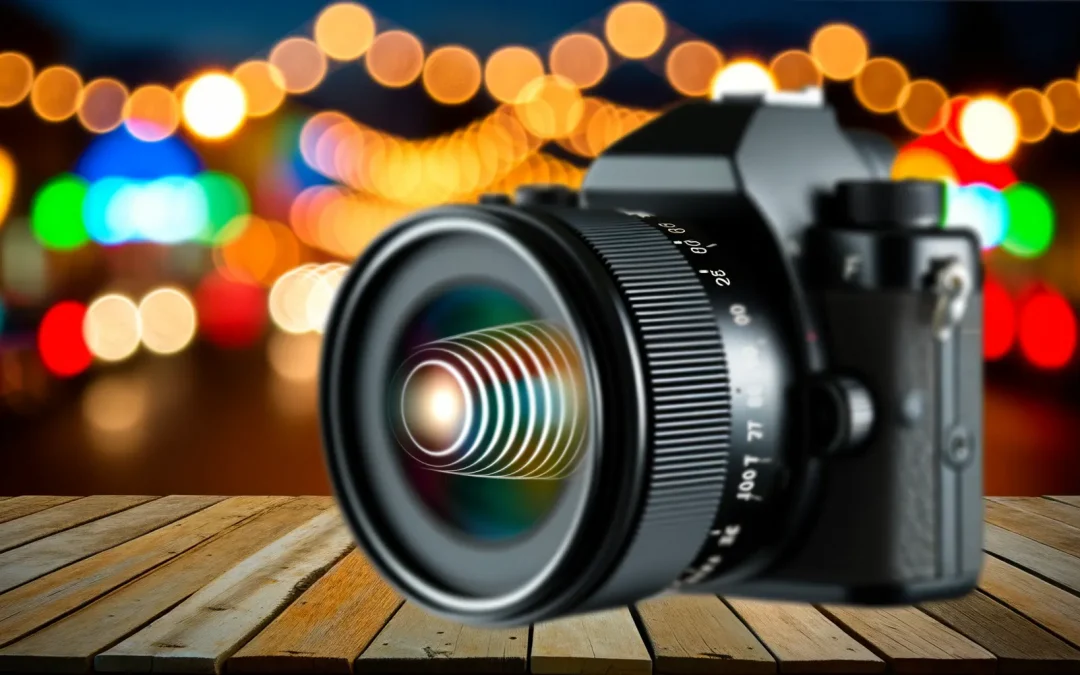Depth of field is a powerful tool that can transform ordinary photos into captivating works of art. Learn how to creatively leverage this essential technique to highlight subjects and add dimension to your photography. With these insights, hone your skills to empower your creative vision.
Understanding Depth of Field
Depth of field is the sweet spot of photography.
The artistry lies in capturing where sharpness meets blur, and it’s fascinating, really. Focal length, aperture size, and distance from subject are the three amigos guiding this magical relationship. Let’s chat about each.
Aperture is the gateway. A wide aperture (think f/1.8 or f/2.8) creates that dreamy background blur, often called bokeh. On the other hand, a narrow aperture (say f/16) pulls everything into clear perspective. Your lens, your creativity.
Focal length, the unsung hero! Longer lenses, like the Canon EF 70-200mm, can enhance blurred backgrounds. Shorter lenses offer more depth, rooting everything firmly in focus. Each lens tells another story.
Distance from your subject is your secret weapon. Close proximity to your subject with a wide open aperture? Pure magic − the background fades into oblivion. Step back and suddenly a whole world of context blooms around them.
Mastering depth of field is like having a conversation between clarity and haze. It’s one of those things that makes photography so exciting. The composition and the way we tell our story dramatically changes with depth of field. This tailored focus or lack thereof allows photographers to guide the viewer’s eye, telling the tale they envisioned.
Check out this blog for more on these techniques.
Creative Techniques with Shallow Depth of Field
Shallow depth of field lets your creativity run free. Unleashing its potential, you can isolate subjects beautifully. Blurring backgrounds to transform them into dreamy swirls, shallow DOF brings main elements into sharp relief.
Small apertures can be your ticket to magic. Your subject, be it a portrait or a delicate flower, springs to life with pontential. The rest fades charmingly away. It’s like the world pauses to let your subject breathe. Suddenly, they pop—command attention, demand a closer look. No Photoshop wizardry needed.
Picture a classic portrait shot. The eyes, deep and inviting—unavoidably captivating. The Nikon AF-S NIKKOR 85mm f/1.4G lens, with its legendary bokeh effects, comes to mind. Check out these bokeh effects for inspiration. Blurry, out-of-focus backgrounds provide contrast, elevating personal style. An artistic choice that never fails to impress. I once saw a portrait mastering this technique so beautifully, I still remember it.
Yet some might argue it’s overly blunt, too straightforward. Perhaps, but there’s an understated elegance in simplicity. And I believe trends often swing back to embrace it. Shallow DOF can add depth, texture, and exquisite refinement to your narrative. It’s a small touch that changes the entire frame.
Harnessing Deep Depth of Field
Deep depth of field captures the vastness and detail of a scene.
Landscapes and buildings spring to life when everything is sharp and clear, from the stones underfoot to clouds hanging in the sky. By allowing every element in the scene to be visible, this technique enhances storytelling. Imagine a landscape where the foreground flowers are as distinct as the mountains beyond. Such images can let viewers truly step into the scene.
To achieve this, choosing the right settings is crucial. A smaller aperture, like f/16 or f/22, increases the depth of field, offering more focus from foreground to background. Pair this with a wide-angle lens for even more coverage. It’s not just about settings, though. The play of light and distance can turn a good photo into something magical. Mornings and late afternoons often provide natural light that’s soft yet rich, casting long shadows and defining textures.
Tripods become your best friend here. With longer exposures, they keep the camera steady. Consider equipment like the Manfrotto BeFree travel tripod. It’s compact yet reliable. Also, using a lower ISO helps maintain image quality.
Depth can be complex, perhaps even daunting, but capturing it rewards patience and curiosity. Embrace the challenge and let your photographs tell a carefully crafted story.
Depth of Field in Action
Depth of field is a powerful tool in a photographer’s arsenal.
Imagine you’re out in the wild, capturing a majestic lion. By using a shallow depth of field, you can focus sharply on the lion’s eyes while the background softens into a creamy blur. This puts the viewer’s attention exactly where you want it. Adjust your aperture to a lower f-stop—something like f/2.8—and see the magic unfold. Honestly, it’s like stumbling upon a hidden world within your frame.
Perhaps you’re into macro photography. Ever tried snapping a dewdrop shimmering on a leaf? A shallow depth of field will sharpen that droplet, making it pop against the gentle blur of green. Fine-tune your aperture and the magic happens again. This technique can transform mundane details into captivating focal points. It’s something every budding photographer should experiment with in their own backyard or local park.
Want to explore further? Delve into the personalised insights on how to use depth of field creatively and elevate your photographic skills. Choose to connect, learn, explore with each shot. Embrace the unpredictability that can come from varied depths of field. Each scenario offers endless combinations and opportunities just waiting to be discovered.
Final words
Depth of field is an incredible tool for photographers seeking to elevate their craft. By mastering both shallow and deep DOF, you’ll open up a world of creative possibilities. Embrace these techniques today and watch your photography grow into a captivating art form. Explore further with professional guidance from experts in the field.

